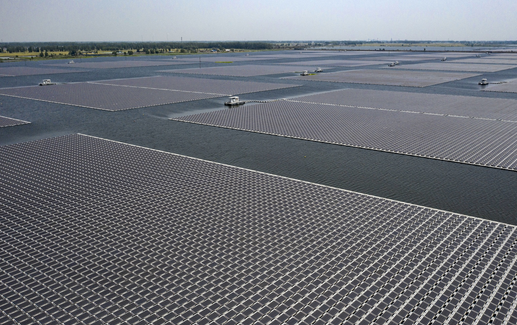
本文由 Jingyi 翻译。
译文
需要密切关注的人,有谁呢?
随着特朗普削减资助以及公司错失了任务目标,越来越多的诉求,呼吁创新方式减少碳排放以及适应更热的世界。这些领袖会保护当地居民,保护其免于极度炎热,要求更富裕的国家,支付更多的钱,来保护全球南部以及部署人工智能来加速能源转换。
美国代表,亚利桑那
Yassamin Ansari 试探性的计划,大学毕业之后就在土耳其处理难民事宜。但是,一通电话改变了她的想法,来自于联合国的总秘书 Ban 的电话。他解释道,全球变暖事宜加剧了现有的问题,包括难民危机。“我百分百确信,我想在联合国做一些关于气候变化的工作。”她也这么干了。
在助力于联合国《巴黎协定》之后,以及组织了气候会议之后,她回到自己的家乡亚利桑那。在那里,伊朗美国人处理气候议题,因为他们是凤凰城会员,他们助力于建立城市的“热度办公室”,推动实施一项计划,到 2040 年时候,完成城市电动巴士建设。ShoelessCai 评注,百度翻译修正。
目前在联邦署,她会打电话到化石能源行业的相关部门,这些部门都具备一定影响力,引入关于极端热度的立法建议“因此,亚利桑那的人就能支付得起夏天的空调费用。” —— Zahra
印度金融办
Raina 重复呼吁更富裕的国家,花更多钱帮助南半球减少排放,应对全球变暖问题。基于新德里,金融办的人为中低收入的国家发言,以至于这些国家在国际谈判中更有发言权。
“对于发展中国家,用能承担的成本获得融资机会的,对于人类的气候活动是非常关键。”她说到。
她作为美国公务员工作了三十年,处理该行业的争端、童工,以及知识产权争议。她开始处理气候融资问题是 2020 年的事情,已然成为联合国谈判的一部分,自从 2021 年来。
今年,Raina 已然完成了印度翘首以盼的框架,管理气候融资,目标是为了保障国外直接投资,投资于萌芽的科技,例如,绿色氢能源,以及气候适应项目 —— Ishika
首席产品官 Lila Sciences
科学发展的过程是难以煎熬地慢。Jon Hennek 从事在 Lila Sciences 加速上述过程的工作。Lila 目标是可持续发展和生命科学有突破性研究。并且 Hennek 工作是促使 AI 应用于催化剂开发以及能源转化关键物质开发。
过去两年半内,这家公司调查了 20000 种物质,用于 AI 以及在实验室测试了最有保障的案例。这些案例包括测试吸附剂的效力,吸附剂用于吸附空气中的碳,这项技术的应用,即转换气候变化的最坏结果。
难以精确表述 AI 可以节省多少时间,Hennek 工作速度是有显著不同的,相较于全人类实验室而言,这些实验室通常是收集相关研究过程中(临时)存在的。这些实验室开启实验,以及操作实验,用单一材料运行时间,能坚持好几个月甚至好几年。ShoelessCai 评注,百度修正。
“Lila 试图做到的事情,仅仅是加速整个行业的齿轮,而非只是找到部分做得更好的方法。”他说到。这家公司从今年早期的秘密项目脱颖而出,融资是 2 亿美元。ShoelessCai 评注,百度修正。
在 Lila 之前,Hennek 在 Osmo 工作,这家公司脱胎于谷歌,试图教会 AI 去开发嗅觉,这可能用于医学领域。再之前,他从事软件工作,帮助农民部署碳隔离设备。他的根本,是关注碳排放减少,Hennek 说到,减少碳排放是使得其进入 Lila 的原因。Brian。
efficacy 功效,效力
sorbents 吸附剂
stealth 秘密行动
sequestering 使隔离
nascent 萌芽的
原文
Ones to watch
As the Trump administration slashes climate funding and companies miss emissions targets, there’s a growing need for innovative ways to cut carbon and adapt to a hotter world. These leaders are shielding residents from extreme heat, demanding richer nations spend more to protect the Global South and deploying artificial intelligence to speed the energy transition.
Yassamin Ansari
US representative, Arizona
Yassamin Ansari’s tentative plan after graduating from college was to work with refugees in Turkey. But a brief phone call with Bob Orr, then-Secretary-General Ban Ki-moon’s climate adviser at the United Nations, changed her mind. He explained how global warming exacerbates existing problems, including refugee crises. “I was 100% convinced that I needed to go work for him at the UN and on climate,” she says. So she did.
After helping work on the Paris Agreement at the UN and organizing some climate conferences, she moved back to her home state of Arizona. There, the Iranian-American tackled climate issues as a member of the Phoenix City Council, helping establish the city’s heat office and pushing through a plan to electrify city buses by 2040.
Now in federal office, she’s calling out the fossil fuel industry’s influence in Washington and introducing legislation on extreme heat “so that Arizonans can afford to keep their air conditioning on in the summer,” she says. —Zahra Hirji
Chandni Raina
Adviser, India Ministry of Finance
An “optical illusion.” That’s how Chandni Raina characterized the $300 billion climate finance deal clinched at COP29. The last-minute criticism was her breakout moment.
Raina has repeatedly called on richer nations to spend more to help the Global South cut emissions and cope with the effects of warming. Based in New Delhi, the finance ministry official has argued for low- and middle-income countries to have a greater voice at international negotiations.
“Access to finance at affordable costs for developing countries is vital for climate action by them,” she says.
She has worked as a civil servant for nearly three decades, dealing with industrial disputes, child labor and intellectual-property rights. She began handling the climate finance portfolio in 2020 and has been part of UN negotiations since 2021.
This year, Raina has been shaping India’s much-awaited framework and rules for climate finance, with the aim of securing foreign direct investments for nascent technologies such as green hydrogen as well as climate adaptation. —Ishika Mookerjee and Shruti Srivastava
Jon Hennek
Chief product officer, Lila Sciences
The scientific process can be painstakingly slow. Jon Hennek is working to speed it up at Lila Sciences. Lila’s goal is to perform cutting-edge research in sustainability and life sciences, with Hennek driving the use of artificial intelligence to develop catalysts and materials key to the energy transition.
Over the last two-and-a-half years, the company has investigated millions of materials using AI and tested the most promising ones in the lab. That includes testing the efficacy of novel sorbents used to capture carbon from air, a technology needed to avert the worst impacts of climate change.
While it’s hard to say exactly how much time AI saves, Hennek says the pace of the work feels dramatically different from an all-human lab, where the process of gathering relevant research, creating a hypothesis, setting up an experiment and running it for a single material can take months or even years.
“What Lila is trying to do is fundamentally accelerate the entire wheel of science, not just finding how to do parts of it better,” he says. The company emerged from stealth mode earlier this year with $200 million in funding.
Before Lila, Hennek worked at Osmo, a company spun out of Google attempting to teach AI to develop a sense of smell, which could have medical applications. Prior to that, he worked on software that helped farmers implement carbon-sequestering practices. Getting back to his roots by focusing on emission cuts, Hennek says, is what drew him to Lila. —— Brian Kahn
原文链接
长按/扫码,有您的支持,我们会更加努力!


|
